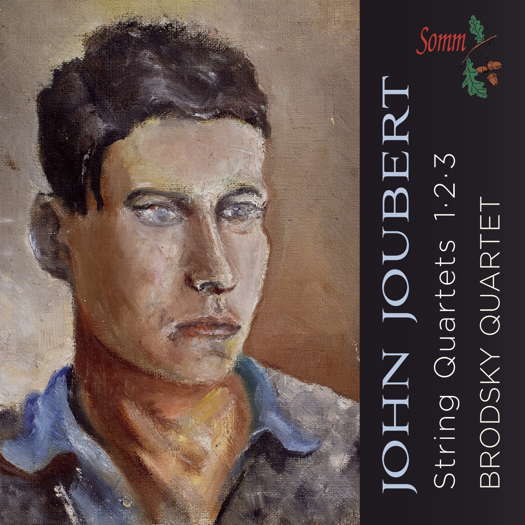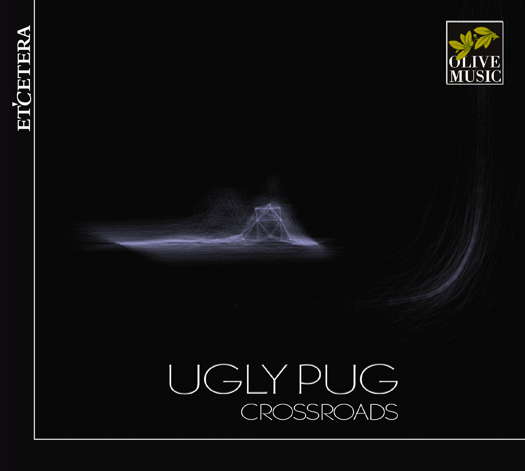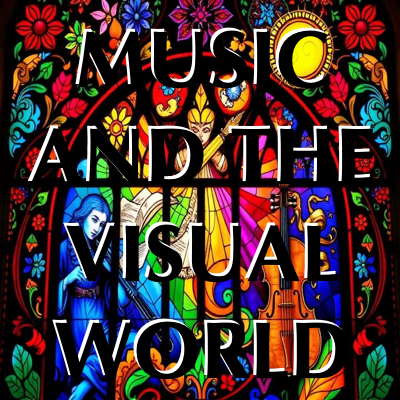 SPONSORED: CD Spotlight. A Fascinating Recording - John Joubert's string quartets, heard by Alice McVeigh.
SPONSORED: CD Spotlight. A Fascinating Recording - John Joubert's string quartets, heard by Alice McVeigh.
All sponsored features >>

Redefining the Idiomatic
Contemporary music for baroque instruments, heard by JOHN DANTE PREVEDINI
'I consider the results compelling, and I hope to hear more works for these resurrected instruments in this new idiom.'
Etcetera Records' new release, Crossroads, is a compilation of contemporary music for baroque instruments, written by various composers and performed by the Amsterdam-based experimental trio Ugly Pug - Juho Myllylä, Miron Andres and Wesley Shen. The hour-long release is available in both streaming and CD format and is issued through the sub-label Olive Music.
One of the basic facts of contemporary instrumental composition is the sheer variety of extended techniques available to - and often expected from - composers and performers. From growling and multiphonics on wind instruments or tremolo and sul ponticello on bowed strings to electronic audio processing, instruments today are given many more voices than they were given in the past. Though some instruments, like the violin, have remained with us relatively unchanged for centuries, the way musicians use them has always been in a state of evolution. Yet countless instruments did fall out of favor over the centuries, and their use in performance was thus never subjected to the evolutionary pressures that would have otherwise awaited them in later eras. In this release, Ugly Pug explores the question of what would have happened if a trio of such instruments - harpsichord, recorder and viola da gamba - had survived after the baroque period and had gone through another three hundred years of evolution in performance techniques.
The six compositions featured on this release include Introduction and Dance (2017) by Tera Lanu, Odds and Ends (2017) by Timo Kittilä, Wormhole (2017) by Eetu Lehtonen, La Strada (1991) by Paweł Mykietyn, the eponymous eight-movement Crossroads (2019) by Wilma Pistorius and the two-movement Reuse Music (2017) by Carlo Diaz. The unusual and artful sequencing of the fourteen total movements on the album is worth noting. Rather than simply presenting the six pieces in linear order, the eight movements of Pistorius' Crossroads interlock with the two movements of Reuse Music and with the remaining single-movement pieces to form a symmetrical latticework pattern out of the compositional voices represented. If this pattern of fourteen movements from six compositions were diagrammed alphabetically, it would look like this: A-BBCBB-D-BBCBB-EF.
Introduction and Dance opens the album with suspenseful lyrical modernism followed by a strong 'groove' that evokes fusion jazz.
Listen — Tero Lanu: Introduction and Dance
(track 1, 1:05-1:35) ℗ 2021 Olive Music :
The eight movements of the titular Crossroads are perhaps the most protean and avant-garde on the album, contrasting sharply with the historically inspired movements of Reuse Music with which they are paired in the track sequence.
Listen — Wilma Pistorius: Blood/Moon/Water - The Star (Crossroads)
(track 2, 0:25-0:55) ℗ 2021 Olive Music :
Listen — Carlo Diaz: The Artifact Cleared (Reuse Music II)
(track 10, 0:15-0:45) ℗ 2021 Olive Music :
Midway through the album is Odds and Ends, which fluctuates between bursts of percussive energy and stretches of silence. Noteworthy here is the innovative use of the harpsichord's lute stop, a lever found on many historic instruments that gives the notes a softer and warmer quality, here applied in a modernistic context. The album concludes with the electroacoustic neo-psychedelic energy of Wormhole and the minimalistic tension of La Strada.
Throughout the album, three centuries of innovations in rhythm, harmony, dynamics, articulation and compositional form are combined with today's full range of acoustic and electronic extended techniques available to the players, including plucking the harpsichord's strings with fingers, playing the viola da gamba with glissando, growling on the recorder and employing various electronic effects, to name just a few. The overall result to my ears, being so familiar with the sound world of baroque instruments in the context of their usual repertoire, was admittedly somewhat startling at first. It is clear to me, however, that this is simply evidence of the degree to which the repertoire we associate with instruments influences what we habitually define to be 'idiomatic' for them. When we really consider it, the experiments of Ugly Pug are no less idiomatic than what avant-garde composers and performers today regularly do with the violin and the human voice - two instruments that are just as much a part of the baroque world as are the recorder, harpsichord and viola da gamba. That each instrument on this album was played with extended techniques developed for a modern relative of that instrument is evidence enough for me that these experiments are not unidiomatic at all. I consider the results compelling, and I hope to hear more works for these resurrected instruments in this new idiom.
Copyright © 27 October 2021
John Dante Prevedini,
Connecticut, USA

CD INFORMATION: UGLY PUG - CROSSROADS
RECENT CLASSICAL MUSIC CD REVIEWS



